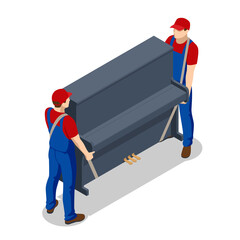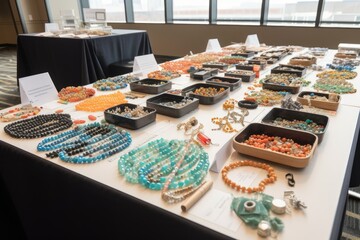Whether moving to a new home or facilitating a family estate breakup, transporting a piano can be daunting. Planning this move carefully and calling Piano Movers In North Charleston SC is important.
Begin by measuring hallways and doorways to ensure that the piano will fit. Position movers at both ends of the instrument and have spotters available to avoid collisions.

Pianos are very heavy, and they can be dangerous to move without the proper equipment. It is best to hire a professional company, like On the Move, to do the job for you. They have the experience to wrap the piano securely and safely for transport, as well as to get it into the truck and onto your new premises.
It’s important to inspect your surroundings before you begin moving anything. Ensure that the piano will fit through all doorways and hallways, and remove any obstacles from the path of travel. It’s also important to take note of the weight and dimensions of your piano, so that you can plan accordingly.
A good quality dolly is essential for transporting a piano. It will prevent injuries to you and your helpers, and it will protect the floors of your home from damage. You can rent one at many moving companies or buy it from an online retailer. A good quality dolly should have four wheels and extra bearings for smoother turning. It should also be able to support the full weight of your piano.
You should also have sturdy strapping for the piano, and you may want to invest in a locking belt. This type of strap has a ratchet on one end that can draw and clamp the strapping tightly around the piano. If you’re moving long distances, it may be worth investing in a “hump strap,” which is especially helpful when lifting your piano up stairs.
Another thing to consider when moving a piano is using neoprene floor runners. These pads have a non-slip surface that clings to any floor, and they will keep your piano from scuffing up your floors as it’s being moved.
Finally, you should cover your piano with a blanket or sheet. This will protect it from being scratched or stained during the move. You can use any old blankets or sheets you have, but it’s a good idea to purchase some moving blankets made specifically for this purpose. These will be thicker and more durable than regular blankets, and they’ll have special tape on the back to hold them in place during rough handling.
A piano is a large, heavy instrument. It requires several people to safely lift and transport it. It’s best to enlist family members and friends who are physically capable of moving the piano and have no existing injuries. Before beginning the move, it’s essential to assemble all necessary supplies and tools, including several moving blankets, a dolly that can handle the piano’s weight, and a large truck or van. It’s also a good idea to remove furniture and other obstacles that could get in the way of the piano while it’s being moved.
It’s important to measure hallways, doorways, and staircases that the piano will need to pass through before the move. It’s not uncommon to have to turn the piano on its side to fit through some passageways. In addition to measuring, individuals should remove doors from their jambs to give the piano more clearance space. In some cases, it may be necessary to install a ramp that can support the piano’s weight to help it navigate stairs or other challenges.
During the packing process, it’s critical to protect the piano with blankets and bubble wrap. Individuals should also take the time to carefully secure each end of the piano with straps. This will prevent the piano from shifting during transport and causing damage. The piano’s keys should be protected as well, using blankets to cover them and tape to hold them in place.
If you are unable to transport your piano yourself, a trusted peer-to-peer shipping company can provide safe and affordable transportation. When choosing a peer-to-peer shipping service, be sure to properly vet potential shippers to ensure they are qualified and have the resources to transport your piano safely over long distances.
It’s also a good idea to purchase insurance for your piano during the shipping process. This will provide peace of mind that if the piano is damaged or lost during transit, you will be reimbursed. Be sure to read the policy’s terms and conditions carefully to understand what coverage you receive. Additionally, be sure to consider premium White Glove services when shipping your piano over long distances. This service provides a more personalized experience, includes guaranteed delivery dates, and offers additional protections like climate control and air-ride suspension.
The delicate nature of a piano means that an impact from even a light bump could cause it serious damage. As such, moving this large instrument requires careful planning and preparation. There is also the risk of injury for anyone involved in this task. It is recommended that you hire professionals to move a piano, as it takes special training and experience to do so safely and efficiently.
The first step in planning a successful piano transport is to measure the passageways through which the piano will need to pass. This includes doors, hallways, and stairways. Then, check the size of your truck or van to make sure that it has the capacity to accommodate the piano. It is also a good idea to map out the path and remove any obstacles that may be in the way of your piano. This includes opening or removing any doors and clearing the path of furniture.
Once you have the space cleared and all necessary tools are ready, you can begin the move. First, lift the legs of the piano by placing a piece of plywood on the floor under each leg. This will keep the piano from slipping during transportation. Then, lift the piano onto a piano dolly with two people on each side and one person underneath. If you are attempting to move the piano up or down stairs, use metal stair ramps instead of regular wood ones. This will allow you to move the piano with less effort and prevent any accidents that may occur if you try to lift the piano up or down without a ramp.
Once the piano is on the dolly, it should be secured to it with packing straps or ratchet straps so that it cannot shift during transit. Finally, wrap the piano in several layers of moving blankets and secure them with tape. It’s a good idea to include the lid and keyboard as well. Be sure to take breaks if you are going a long distance, as over-exertion can lead to injuries. Once the piano is on the dolly and in the truck, tie it down to prevent it from shifting while in transit.
Moving pianos is a labor-intensive process that requires specialized equipment like ramps and piano dollies. Piano movers have years of experience working with all different types and sizes of pianos. They know how to safely move and transport them without damaging the instrument or causing injury to their employees. This makes them the best choice to handle your piano transportation needs.
The first step in transporting a piano is to choose a path through which it can be carried. This will include identifying all obstacles such as hallways, doorways and stairs that need to be traversed. It’s also important to remove any furniture or objects that might be in the way of a smooth move. Once the piano is in a clear path, it can be pushed to its destination. If there are stairs or a ledge that can’t be rolled over, ramps will need to be used. Once the piano is on the truck deck, it will need to be rolled or gently lifted into place.
A professional piano mover will take a number of additional steps to protect the instrument during transit, including wrapping it in blankets and padding. They will also have a truck that is specially designed for the transportation of pianos. The size of the truck, its tailgate lift and power ramp will be based on the size of your piano and the distance it’s being transported.
Pianos are difficult to move for many reasons, from their awkward shape and size to the fact that they’re heavy and have uneven weight distribution. Trying to move one on your own could result in an accident that’s costly and dangerous for you and others.


